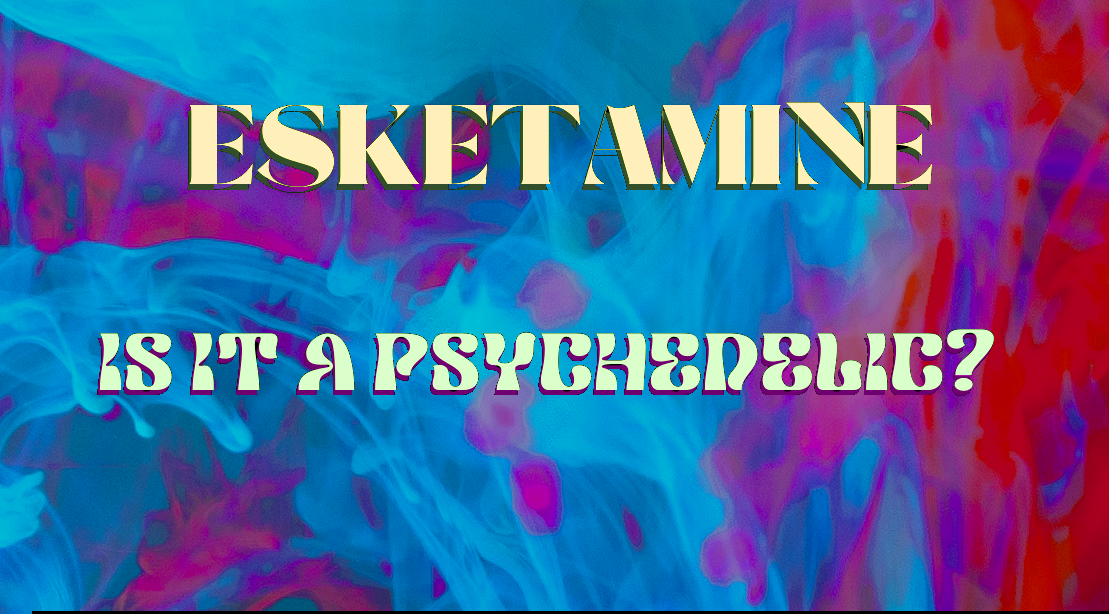Understanding Esketamine: Is It a Psychedelic Substance?
The classification of esketamine as a psychedelic substance is a topic of growing interest and debate within the medical and scientific communities. In this article, we will explore the nature of esketamine, its effects on the mind and consciousness, and the ongoing discussions regarding its classification as a psychedelic.
What Is Esketamine?
Esketamine is a medication primarily used for the treatment of severe depression that has not responded to other treatments. It is a form of ketamine, a well-known anesthetic, which is administered as a nasal spray or intravenously under medical supervision. Esketamine is approved by regulatory authorities in various countries for its antidepressant effects.
The Psychedelic Qualities of Esketamine
Esketamine has been associated with a range of psychological effects that some individuals describe as psychedelic in nature. These effects can include altered perceptions of reality, changes in thought patterns, and experiences of dissociation from the self or surroundings. It’s important to note that these effects are typically more pronounced at higher doses.
Psychedelic Properties:
Esketamine’s effects can include visual and auditory hallucinations, similar to those often associated with classic psychedelics like LSD or psilocybin.
Altered Consciousness:
Many individuals report a sense of disconnection from their usual sense of self during esketamine experiences, often described as a “floating” or “out-of-body” sensation.
Emotional Insights:
Some users describe gaining valuable insights into their emotions and thought processes during esketamine sessions, akin to the therapeutic potential of psychedelics.
The Debate on Classification
The debate over whether esketamine qualifies as a psychedelic substance centers around its capacity to induce altered states of consciousness and perceptual changes. Some argue that its effects are indeed psychedelic in nature, while others contend that it differs significantly from classic psychedelics.
Medical Context:
In the medical field, esketamine is primarily viewed as an antidepressant with rapid-acting properties. Its classification as a psychedelic may not be a central concern for clinicians focused on its therapeutic applications.
Psychological and Experiential Aspects:
From a psychological and experiential perspective, some users and researchers draw parallels between esketamine experiences and classic psychedelic journeys. However, distinctions exist in terms of duration, intensity, and subjective qualities.
The Therapeutic Promise of Esketamine
Beyond its classification as a psychedelic or non-psychedelic substance, esketamine holds significant promise in the realm of mental health treatment. Research has revealed its potential as a rapid-acting antidepressant, particularly for individuals with treatment-resistant depression. Here are some key considerations regarding its therapeutic applications:
Rapid Onset of Action:
One of the most striking aspects of esketamine is its rapid onset of action. Unlike traditional antidepressants that may take weeks to exert their full effects, esketamine can often lead to notable improvements within hours or days of administration.
Relief for Treatment-Resistant Depression:
Esketamine is particularly beneficial for individuals who have not responded to other antidepressant treatments. Its ability to provide rapid relief can be life-changing for those grappling with severe depression.
Psychedelic-Assisted Therapy:
Some clinicians and researchers are exploring the potential of esketamine-assisted therapy sessions, where individuals receive the medication in a controlled setting to facilitate therapeutic insights and emotional processing.
The Safety and Monitoring of Esketamine
As with any potent medication, the use of esketamine requires careful oversight and monitoring, especially when it comes to potential side effects and misuse. These factors are crucial to consider:
Safety Measures:
Esketamine is typically administered under medical supervision to minimize risks and ensure safety. Clinicians closely monitor patients during and after treatment sessions.
Potential for Abuse:
Due to its psychoactive effects, there is a potential for misuse or abuse of esketamine. Regulatory agencies have implemented controls and safeguards to mitigate this risk.
Individual Responses:
It’s important to recognize that individual responses to esketamine can vary significantly. What may be a transformative treatment for one person may not have the same effect on another.
Future Directions and Research
The ongoing exploration of esketamine’s properties and its classification continues to be a dynamic field of research. Future studies will likely shed more light on its mechanisms of action, long-term effects, and potential applications beyond depression.
Combination Therapies:
Researchers are investigating the possibility of combining esketamine with other therapeutic approaches, including psychotherapy, to enhance treatment outcomes.
Expanded Indications:
Esketamine’s potential for treating conditions beyond depression, such as post-traumatic stress disorder (PTSD) and anxiety disorders, remains an active area of investigation.
Individualized Treatment:
Personalized medicine approaches aim to identify which individuals are most likely to benefit from esketamine treatment, helping tailor interventions to specific patient needs.
Exploring the Psychedelic Aspects
While esketamine is primarily recognized for its antidepressant properties, it’s important to delve deeper into its psychedelic aspects, as this is where the debate regarding its classification gains traction.
Psychedelic Experiences:
Esketamine can induce experiences that parallel those associated with classic psychedelics, such as altered perceptions, vivid imagery, and shifts in consciousness. Users may describe encountering inner landscapes and insights during their sessions.
Neurological Mechanisms:
Understanding the neurological mechanisms underlying esketamine’s effects is crucial. It primarily acts on the N-methyl-D-aspartate (NMDA) receptor, but its precise interactions within the brain and how they relate to its psychedelic qualities are still being explored.
Therapeutic Potential Beyond Depression
The therapeutic landscape for esketamine extends beyond depression, and researchers are actively investigating its potential in various mental health conditions.
Post-Traumatic Stress Disorder (PTSD):
Early studies suggest that esketamine may hold promise in treating PTSD, potentially helping individuals process traumatic memories and reduce the emotional distress associated with them.
Anxiety Disorders:
Some trials have explored the use of esketamine for anxiety disorders, including generalized anxiety disorder and social anxiety disorder. Preliminary results indicate that it may offer relief for these conditions.
Substance Use Disorders:
Research into esketamine’s role in treating substance use disorders, particularly for individuals struggling with addiction, is ongoing. It may help disrupt addictive patterns and support recovery efforts.
The Importance of Clinical Supervision
As the discussion surrounding esketamine’s psychedelic properties evolves, one aspect remains clear: the importance of clinical supervision.
Safe and Controlled Environment:
Esketamine is administered in a controlled medical setting to ensure the safety of the individual undergoing treatment. Healthcare providers monitor vital signs and offer support throughout the session.
Psychedelic-Assisted Therapy:
Esketamine-assisted therapy sessions involve not only the medication but also therapeutic guidance. Trained therapists help individuals navigate their experiences, integrate insights, and work through emotional challenges.
Minimizing Risks:
Clinical supervision helps minimize the potential for misuse or adverse reactions. Healthcare providers tailor the treatment to the individual’s needs and adjust dosages accordingly.
Esketamine and the Quest for Psychedelic Science
The debate over whether esketamine is a psychedelic substance intertwines with the broader context of psychedelic research and its resurgence in recent years. This unique section explores the intersection of esketamine and the evolving landscape of psychedelic science.
Psychedelic Renaissance:
Esketamine’s emergence as a subject of debate aligns with the resurgence of interest in psychedelics as potential tools for mental health and well-being. Researchers are reevaluating these substances for their therapeutic potential.
The Psychedelic Experience:
Esketamine offers a glimpse into the intricate nature of psychedelic experiences. The capacity of a substance like esketamine, originally developed for anesthesia, to induce profound alterations in consciousness highlights the mysterious and transformative qualities of psychedelics.
Psychedelic-Assisted Therapies:
Esketamine-assisted therapy sessions underline the therapeutic potential of psychedelics. By combining medication with therapeutic support, individuals may access deeper insights, process emotions, and catalyze personal growth.
Expanding Horizons:
Esketamine’s presence in the psychedelic discourse contributes to the widening scope of psychedelic research. It encourages scientists to explore a broader spectrum of substances and their effects on the mind.
Regulatory Considerations:
The classification of esketamine as a controlled substance for medical use underscores the importance of regulatory oversight in the emerging field of psychedelic medicine. Striking a balance between accessibility and safety remains a central concern.
The Future of Esketamine and Psychedelic Research
Looking ahead, the future of esketamine and its role in psychedelic research is promising but rife with questions and complexities.
Further Investigations:
Researchers are poised to delve deeper into the mechanisms of esketamine’s effects, shedding light on the overlap between its psychedelic properties and therapeutic potential.
Integration and Holistic Healing:
Esketamine’s integration into the realm of mental health treatment signifies a shift toward more holistic and multidimensional approaches to healing. It encourages a reevaluation of how mental health conditions are understood and addressed.
Public Discourse:
The ongoing debate surrounding esketamine invites wider public discourse on the nature of psychedelics, their effects, and their place in modern healthcare. It encourages individuals to become informed and engaged participants in shaping the future of mental health treatment.
The ongoing exploration of esketamine’s properties and potential benefits underscores the need for rigorous scientific research and a nuanced understanding of its effects. Regardless of its classification, esketamine’s role in mental health treatment and its potential impact on consciousness continue to be areas of fascination and investigation in the fields of psychiatry and psychology.
Whether esketamine is classified as a psychedelic substance is a complex question that hinges on various factors, including its effects, usage context, and individual experiences. While it does share some characteristics with classic psychedelics, it also exhibits notable differences.

